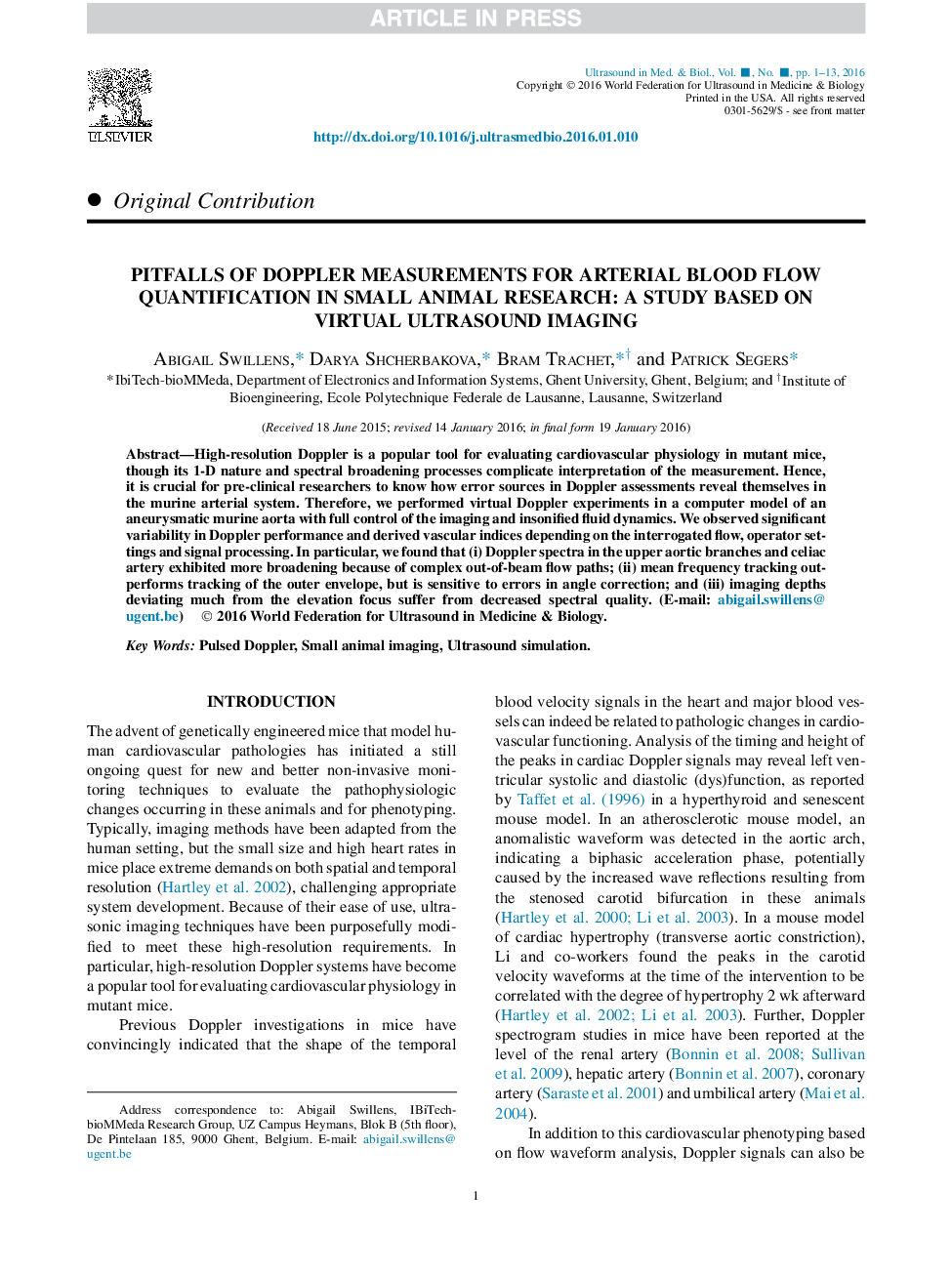| Article ID | Journal | Published Year | Pages | File Type |
|---|---|---|---|---|
| 10691030 | Ultrasound in Medicine & Biology | 2016 | 13 Pages |
Abstract
High-resolution Doppler is a popular tool for evaluating cardiovascular physiology in mutant mice, though its 1-D nature and spectral broadening processes complicate interpretation of the measurement. Hence, it is crucial for pre-clinical researchers to know how error sources in Doppler assessments reveal themselves in the murine arterial system. Therefore, we performed virtual Doppler experiments in a computer model of an aneurysmatic murine aorta with full control of the imaging and insonified fluid dynamics. We observed significant variability in Doppler performance and derived vascular indices depending on the interrogated flow, operator settings and signal processing. In particular, we found that (i) Doppler spectra in the upper aortic branches and celiac artery exhibited more broadening because of complex out-of-beam flow paths; (ii) mean frequency tracking outperforms tracking of the outer envelope, but is sensitive to errors in angle correction; and (iii) imaging depths deviating much from the elevation focus suffer from decreased spectral quality.
Related Topics
Physical Sciences and Engineering
Physics and Astronomy
Acoustics and Ultrasonics
Authors
Abigail Swillens, Darya Shcherbakova, Bram Trachet, Patrick Segers,
